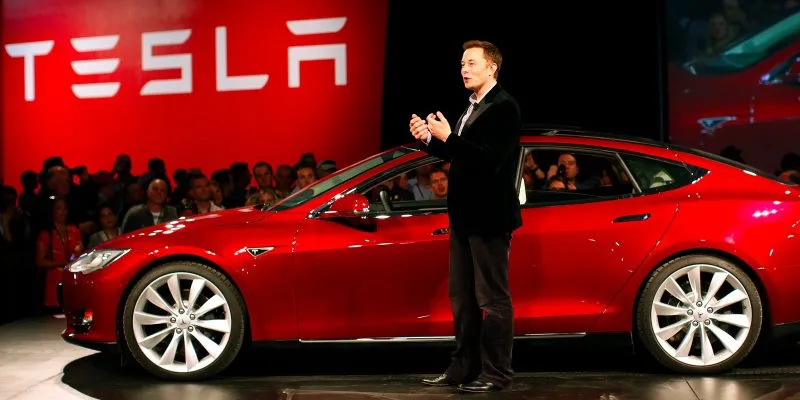Tesla hopes to overcome a sluggish first quarter, targets 20,000 vehicles in 2Q16
The projected slow growth rate for 2016 of American electric carmaker Tesla Motors raised questions on how the company would deliver the supplies of Model 3. Analysts estimated that Tesla’s global revenue will touch $8.5 billion, with a slower growth rate of 58.6 percent. And the number will be $11 billion in 2017, representing a slower year-on-year revenue growth rate of 29.5 percent.

To everyone’s surprise, however, Tesla has announced the selling of a total of $2 billion in stock to back its expansion plans around the upcoming Model 3 electric car. The American automotive giant is reported to have accepted 3.7 lakh orders for Model 3, the price of which starts at $35,000. According to a Tesla press statement, Model 3 will begin production in late 2017, ramping Tesla vehicle production to five lakh vehicles per year.
Tesla CEO Elon Musk said that the company would drop suppliers who could not meet deadlines and would bring more production of parts in-house than traditional automakers typically do, as reported by Reuters.
It's very important for us to have the ability to produce almost any part on the car at will because it alleviates risk with suppliers," he had added.
Features of Model 3
Model 3 is considered as the next logical step towards fulfilling Tesla’s vision to accelerate the world’s transition to sustainable energy. Model 3’s interior space can easily fit five adults and its electric motor provides zero to 60 mph acceleration in less than six seconds.
The other features include electric all-wheel drive, 200 miles range, rear-facing jump seats, 17-inch centre touchscreen (which combines media, navigation, communications, cabin control and vehicle data), over-the-air software updates, mobile app remote control and WiFi.
Tesla is increasing the production ramp as fast as possible, but I'd recommend ordering a Model 3 soon if you want a 2018 delivery,” Musk had tweeted.
Based out of Fremont, California, Tesla Factory has 5.3-million sq.ft. space for manufacturing and administration, making it one of the one of the world’s most advanced automotive factories. It bought the facility in 2010 and restructured it before rolling out its first Model S in June 2012. Today, it produces more than one lakh vehicles annually.
The facility was jointly owned by General Motors and Toyota as New United Motor Manufacturing, Inc (NUMMI) from 1984 to 2010.
Growth curve of Q1 2016
Tesla Q1 witnessed the delivery of 12,420 Model S vehicles and 2,400 Model X vehicles, which was almost 50 percent more than Q1 last year. Followed by its delivery of 17,478 vehicles in 4Q15, the 1Q16 delivery count was expected to be 16,000.
The number was impacted by its severe Model X supplier parts shortages in January and February this year. However, with the supply chain constraints being resolved, the electric carmaker is confident of delivering 80,000-90,000 new Model S and Model X vehicles in 2016.
A Market Realist report stated that Tesla so far in 2016 has been one of the biggest losers among its peers, delivering a total of 51,000 vehicles in 2015. As of February 4, 2016, Tesla Motors has witnessed a decline of 27 percent, while American automaker Ford Motor’s stock fell by 18.2 percent, General Motors by 15.8 percent and Toyota by 7.1 percent.
Foray into truck industry
Recently at an International Transport Forum in Germany, Tesla CTO JB Straubel hinted that the company has the potential to make an electric truck, given its technological advancement in the vehicles category.
“I think it is quite likely we will do a truck in the future. And it’s sort of a logical thing for us to do in the future,” said Musk in a StartmeupHK Venture Forum, Hong Kong in January this year.
While re-evaluating the amount of capital expenditure, Tesla is expected to spend about 50 percent higher than earlier guidance of $1.5 billion for 2016, and is set to produce 20,000 vehicles in Q2, posting a sequential growth of nearly 30 percent.







